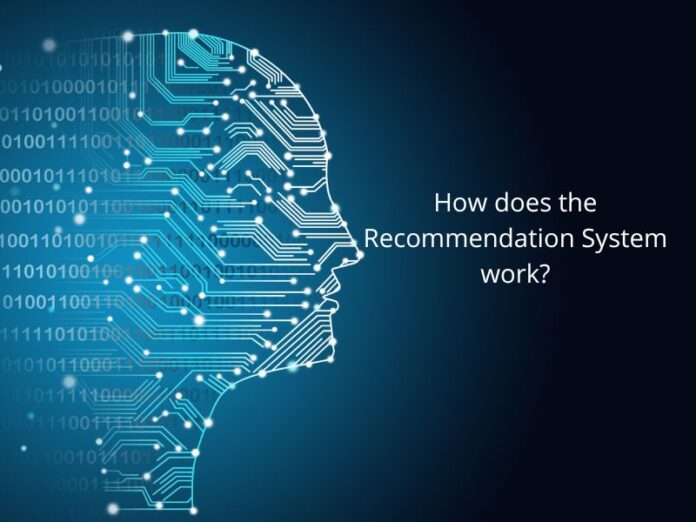Do you know, Machine Learning is doing wonders? From building the heavily hyped, self-driving Google car to online recommendation of Amazon/Flipkart. Machine learning applications are now becoming everyday life. In this article, let’s uncover How does Recommendation System work?
What is Recommendation System?
Recommendation System is nothing but a prediction system that assist buyers to help discover new products and services. It is based on user activity like whatever goods and services you purchase or viewed, system will show the recommendation to further. Every time you shop online, a recommendation system is guiding you towards the most likely product you might purchase.
It tracks user activity and ‘recommends’ future actions to the users, whether it’s movies, music or products to buy. Companies like Amazon, Instagram, Spotify, Netflix etc. all uses recommendation systems.
A good recommendation system is defined as a good prediction of user activity. The more accurate the recommendations the better the chance of the user to click on the particular post/song/movie. In simpler words, when you buy a product from Amazon, Amazon instantly starts recommending its substitutes or complementary products. Or, when you listen to a song on Spotify, Spotify recommends songs of a similar genre and of the same artist.
One of the best recommendation systems works on Instagram and Netflix. Both these platforms use effective machine learning methods to predict user activity. So How Does the Netflix recommendation System work? Before I get into the technicalities, I’ll specify the factors that affect the recommendation engine.
Netflix helps you find a movie or show, by observing your actions(factors). What is observed? Your history, other users that have a similar taste and what they watched, information like genre, actors, rating etc.
Netflix also further looks at: The time of the day when you watch(it looks at the time you frequently visit the website), the number of devices that are connected, what devices they are, and for how long you watch.
All this information helps the algorithm for the engine to work. The Netflix algorithm uses reinforcement learning, neural networks, matrices, word embedding etc. Matrix factorization is used while recommending movies or shows to users.
A term called collaborative filtering helps identify the relationship between items and entities. User ratings and items form a relationship, for the recommendation to work.
A ranking from 1 to 5 for 5 movies forms a matrix. This method helps to find out similarities between users, therefore both of their Netflix home pages would look rather similar. Another popular feature is ‘word embedding’. Word embedding is when a word is turned into a vector. It is known as Word2Vec. Two words that correlate would have a similar vector. For example vectors for the words cat and dog or king and queen would be closer than dog and king or cat and queen. Recommending and predicting with these vectors that are close to each other, is called word embedding.
Word embedding in Netflix is used on a contend-based recommendation system. Where if a movie or show is searched up, and that movie/show is not available, movies closest to the particular search are recommended.
Netflix continuously improves its recommendation engine, by taking feedback from users and also continue learning about their preferences and changing the matrix of users. Another huge platform with an amazing AI and recommendation algorithm is Instagram.
The Instagram platform also uses word embedding as an algorithm, in fact, this content-based prediction system is very useful for Instagram. Everyone goes through the wondering moment of how Instagram ever so quickly recommends or advertises user thoughts and products.
Firstly, let’s talk about the user factors that affect the Instagram engine:
1. Time spent on post
2. If you ‘liked’ the post
3. If you’ve saved the post
4. Taps on profile
5. Information about the post(type of post)
6. Information about the poster
7. Interaction history
These factors make a user’s explore tab and home page. The more time you spend on a post the more likely you are to be recommended similar posts. Moreover, information about the poster counts as it describes the post type, whether it is a YouTube, a personal friend or a nutrition page. These facts help Instagram to understand your activity and interests. Interaction history is accounted to analyze your previous likes or comments on the same profile, which shows your closeness with the account/person.
Furthermore, the explore tab works in a way, where if you happen to like a diet page, you’re likely to be shown more diet-related accounts and posts. Previously, Instagram used to work on hashtags, and posts with similar hashtags used to be recommended. However, it’s not the case anymore as Instagram uses updated AI and algorithms. Word Embedding is now vastly used in Instagram.
In conclusion, AI and ML have become a huge boost for platforms that analyze user activity. In today’s tech and social media invested world, predictions have become a huge topic. Moreover, accurate predictions and its technology invest the users in these platforms. Some say that this large amount of information and little to no privacy is dangerous, However, some are completely intrigued by these algorithms and engines. These huge platforms as they go ahead, only make their engines more efficient and accurate, the software keeps on being updated and the user experience keeps on improving.
Good Luck! 
















































